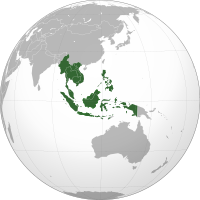
Photo from wikipedia
Abstract The gene and cell therapy fields are advancing rapidly, with a potential to treat and cure a wide range of diseases, and lentivirus-based gene transfer agents are the vector… Click to show full abstract
Abstract The gene and cell therapy fields are advancing rapidly, with a potential to treat and cure a wide range of diseases, and lentivirus-based gene transfer agents are the vector of choice for many investigators. Early cases of insertional mutagenesis caused by gammaretroviral vectors highlighted that integration site (IS) analysis was a major safety and quality control checkpoint for lentiviral applications. The methods established to detect lentiviral integrations using next-generation sequencing (NGS) are limited by short read length, inadvertent PCR bias, low yield, or lengthy protocols. Here, we describe a new method to sequence IS using Amplification-free Integration Site sequencing (AFIS-Seq). AFIS-Seq is based on amplification-free, Cas9-mediated enrichment of high-molecular-weight chromosomal DNA suitable for long-range Nanopore MinION sequencing. This accessible and low-cost approach generates long reads enabling IS mapping with high certainty within a single day. We demonstrate proof-of-concept by mapping IS of lentiviral vectors in a variety of cell models and report up to 1600-fold enrichment of the signal. This method can be further extended to sequencing of Cas9-mediated integration of genes and to in vivo analysis of IS. AFIS-Seq uses long-read sequencing to facilitate safety evaluation of preclinical lentiviral vector gene therapies by providing IS analysis with improved confidence.
Journal Title: Nucleic Acids Research
Year Published: 2020
Link to full text (if available)
Share on Social Media: Sign Up to like & get
recommendations!